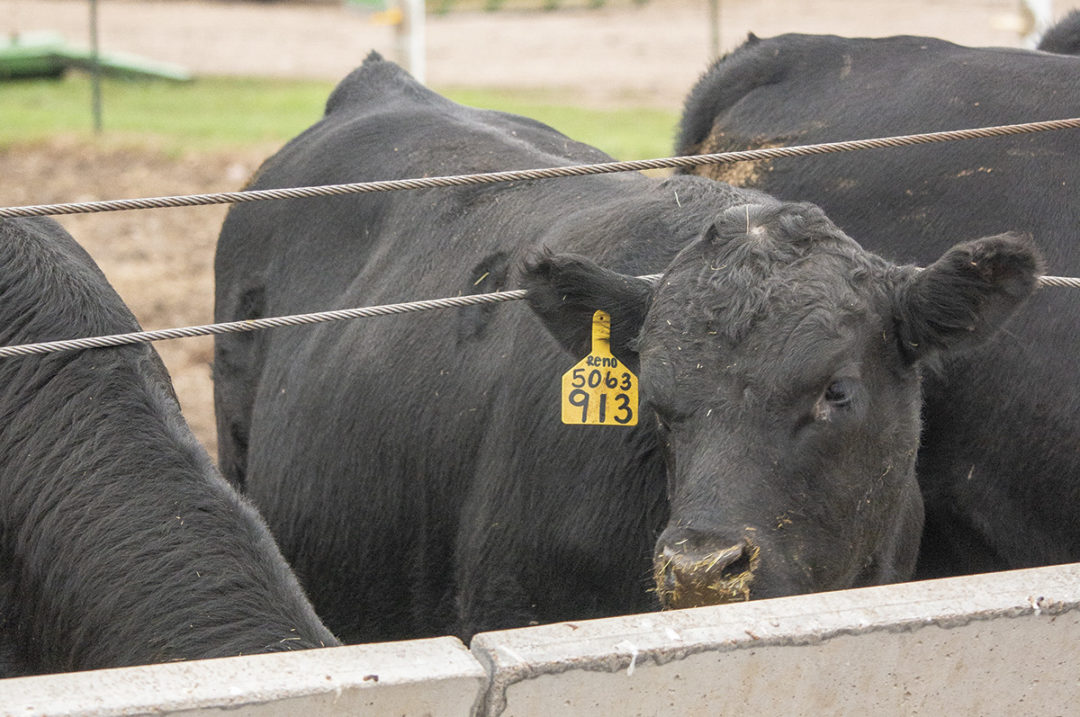Corn and distillers grains are staples in Midwest finishing diets. Understanding how the various types and inclusion levels of these feed resources impact cattle performance and ultimately the bottom line of an operation is important. Recent research conducted by the University of Nebraska – Lincoln details corn processing methods and the inclusion of various distillers grains in finishing diets.
Corn processing methods
Grain processing increases starch utilization, resulting in improved cattle performance. Dry rolling, harvesting and storing high-moisture corn, as well as steam flaking, are common methods of corn processing. The costs associated with grain processing typically increase with the intensity of the processing method, but economic returns can vary depending on corn price, cattle performance and size of feedyard.
When comparing corn processing methods without the use of distillers grains, feeding steam-flaked corn has been shown to improve feed conversion compared to high-moisture corn or dry-rolled corn. Assuming energy prices do not change, steam flaking can be a cost-effective option when corn prices are high due to this improvement in feed conversion. For producers who have the capability to harvest and store corn early in the fall, high-moisture corn can be a competitive option from an inventory and price standpoint. Feeding a 50-50 blend of high-moisture corn and steam-flaked corn without distillers grains has been shown to have a positive associative effect, resulting in similar gain and feed efficiency compared to feeding steam-flaked corn alone.
Distillers grains
For producers who have access to distillers grains, they continue to be a cost-effective source of protein and energy in finishing diets. Although feeding steam-flaked corn-based diets results in better feed conversion than dry-rolled corn-based diets when fed without distillers grains, cattle performance has been shown to be similar for both corn processing methods when fed with 35% wet distillers grains (dry matter basis). Additionally, feeding high-moisture corn in finishing diets containing up to 40% wet distillers grains has a performance advantage over feeding steam-flaked corn. Research at the UNL showed optimal performance when wet distillers grains were included at 40% in dry-rolled corn-based diets, 27.5% in high-moisture corn-based diets and 15% in steam-flaked corn-based diets.
Feeding wet distillers grains in steam-flaked corn-based diets outperformed modified distillers grains through maintained gain and lower feed intake, resulting in better feed conversion. Replacing high-moisture corn, steam-flaked corn or a combination of the two corn types with modified distillers grains has been shown to increase intake, gain and final weight, while feed conversion is similar. When steam-flaked corn replaced high-moisture corn in diets containing 20% modified distillers grains, gain and feed efficiency improved linearly.
Points to consider
Steam flaking is often the most costly corn processing method but results in better feed conversion compared to high-moisture or dry-rolled corn when fed without distillers grains. The inclusion of wet distillers grains in finishing diets has a performance and economic advantage when fed with less-intensely processed corn. For steam-flaked corn-based diets, the inclusion of distillers grains can improve gain, regardless of distillers type. However, feed conversion is better when wet distillers grains are included in steam-flaked corn-based diets compared to modified distillers grains.
For more information, please see the following Nebraska Beef Cattle Reports at the UNL website:
- Effect of Corn Processing in Finishing Diets Containing Wet Distillers Grains on Feedlot Performance and Carcass Characteristics of Finishing Steers
- Effect of Corn Processing and Wet Distillers Grains Inclusion Level in Finishing Diets
- Wet Distillers Grains and Ratios of Steam-Flaked and Dry-Rolled Corn
- Evaluating Finishing Performance of Cattle Fed High-Moisture Corn and Steam-Flaked Corn Blends with Modified Distillers Grain
- Effect of Finishing Cattle with Blends of High Moisture and Steam-Flaked Corn with and without Distillers Grains
- Evaluating Performance of Cattle Fed Steam-Flaked Corn Based Finishing Diets Fed Increasing Inclusions of Wet or Modified Distillers Grain













